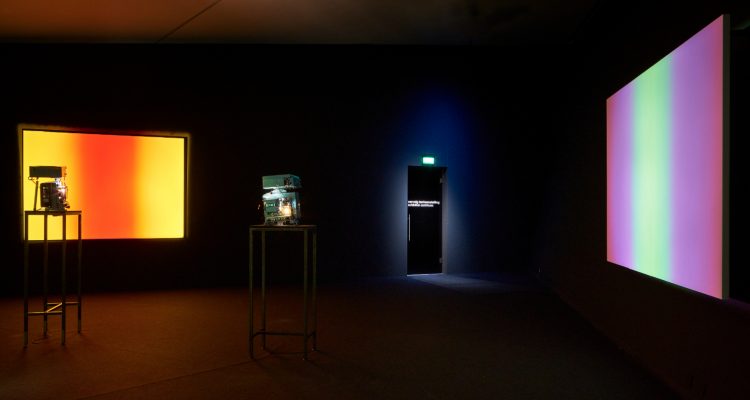On Monday, Oct. 17, The Frederickson Family Innovation Lab welcomed artists Sandra Gibson and Luis Recoder to present “Obscurus Projectum: The Lost Cinematic Art of the Camera Obscura” in the Dolan School of Business Event Hall.
Gibson and Recoder have had their cinema installations and projection performances exhibited in museums such as the Whitney Museum of American Art, the Memorial Art Gallery, the Academy Museum of Motion Pictures and the Museum Kunstpalast Düsseldorf. Gibson explained that they do not have a permanent studio space, therefore, their artwork has also appeared in various artist residencies across the globe.
Before the event even began, I had the pleasure of attending a pre-event dinner with both Gibson and Recoder in the Quick Center. This dinner allowed for a more intimate introduction of the artists as well as some of Fairfield’s Art and Film faculty and a few students. I had a lovely conversation with Gibson in which she detailed her start as a painter at the Rhode Island School of Design, how she met and started working with her partner Recoder and her travels across the world with her artwork.
The dinner concluded and it was time to head over to the Dolan School of Business Event Hall for the lecture.
In their presentation, Gibson and Recoder began by explaining exactly what “Camera Obscura” means. Unfamiliar with this art form myself, I was fascinated to learn more. They explained that “Camera Obscura” is the Latin term for a “dark room” or any dark space with a small aperture that emits rays of light into an interior space. This light is projected onto a white surface, such as a wall or a screen.
Gibson and Recoder walked their audience through a brief history of “Camera Obscura,” as it was a game-changing discovery in the early modern era. Artists, scientists and philosophers of the time, such as René Decartes, Johannes Kepler and Leonardo Da Vinci, experimented greatly with this technique.
However, with the invention of photography, this has been a dying art form. Gibson and Recoder have worked together for the past 20 years, re-discovering and redefining this art form. In their lecture, they presented their art spanning the past ten years.
One work of art that was fascinating to me was one of their first projects to gain recognition in 2013 called “Topsy-Turvy”. Gibson and Recoder presented images of the blueprints, the construction and the final product of their “Camera Obscura” in Madison Square Park. This was a project in which the general public could enter the “Camera Obscura” or dark room for up to three minutes. Inside, projections of the city’s skyscape and the movements of the city were projected upside down. Later that year, Gibson and Recoder were asked to bring this project and present it at the Brooklyn Bridge Park as well.
In creating spaces like “Topsy-Turvy,” Recoder claims, “We were originally thinking that it would be meditative and it would be a place of refuge for people to go to escape their everyday lives and to have a space where they are in reality but it’s a kind of altered reality and a space to think.”
Both artists have backgrounds in film performance and were used to audiences coming specifically to see them film. In regard to the audience of their “Camera Obscura,” Gibson says “This was a new thing for us to have a general public, anybody walking through the park, to come in. It was a whole new audience for us.”
Though this was the project that really got them started in the art form of “Camera Obscura,” Gibson and Recoder found themselves asking what was next. They earned a chuckle from the audience when they claimed they did not want to be like a moving circus, bringing their exhibition from park to park.
From there, they experimented with projects in theaters, art galleries, museums, residencies and even their own bedroom. Each work of art they presented had a unique and beautiful projection of images through light. I found myself in awe of their ability to project such beautiful exterior images into interior spaces.
Gibson and Recoder’s “Camera Obscura” work is like no other form of art I have experienced. I left their lecture feeling inspired to make, or at least attempt to make, my own “Camera Obscura!”
More information about Gibson and Recoder and their fascinating artwork can be found on their website.
*Editor’s Note: An earlier version of the story noted that Gibson and Recoder presented their work in Madison Square Garden. This information was learned to be incorrect and updated to Madison Square Park.


Leave a Reply